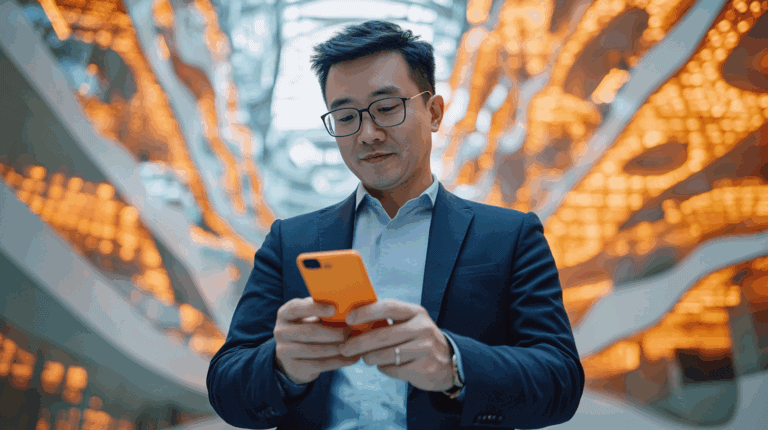Boost Your Reach by Understanding the LinkedIn Algorithm
LinkedIn is the social media platform for B2B marketing, filled with opportunities for professional connections and thought leadership. However, it can sometimes feel like your posts aren’t going anywhere. You get a few likes, maybe a comment or two, but that’s it. What is going on?
How exactly social network algorithms work is a closely guarded secret — and LinkedIn is no different. Indeed, most evidence for what is important and what will work to improve your reach is anecdotal. However, we know that LinkedIn measures dozens of factors to rank the quality of your content and predict how relevant it will be to your audience. And by better understanding how LinkedIn thinks, you can boost your visibility across the platform and increase your brand presence.
To be clear, we are not talking about gaming the system to get around the need for quality content and authentic engagement. Trust us, plug-ins, ploys, and hacks won’t work in the long run. LinkedIn’s machine learning is smarter than you think, and they are pretty diligent about cracking down on things that violate their policy. Instead, we advocate working with the system to create a great experience for your audience.
So, let’s explore some of the elements that influence LinkedIn’s algorithm, so you can make the most of it.
Sign up for our newsletter
Get the latest news and ideas from 1827 Marketing sent directly to your in-box.
You will receive an email from us every couple of months, and you can opt out at any time.
How the LinkedIn Algorithm Works
A basic understanding of how LinkedIn decides to remove or amplify content is an important part of improving your reach on the platform.
Currently, LinkedIn utilises a four-step process that incorporates both machine learning and human decision-making to determine what content is distributed across its network:
1. Initial filter
Every time you post to LinkedIn, their system immediately analyses the content and classifies it as spam, low quality, or approved.
2. Audience testing
The second stage filter measures the reactions a sample audience has towards low-quality and approved content. This sample audience is matched with your post based on ‘multi-objective optimisation’ — such as the content they’ve liked and shared before, who they’ve interacted with, and how frequently.
3. Content scoring
Based on the test audience reaction, LinkedIn scores your content. Different user actions have different weights in the algorithm. For example, a ‘like’ may get your content one point, while a comment earns it two points. LinkedIn is serious about fighting spam accounts, so they also consider your profile and credibility. The better you score, the more visible your content becomes and vice-versa.
4. Editor assessment
LinkedIn employees may also do manual spot checks that affect whether your post continues to appear in the news feed. If the post is working particularly well (i.e. it is of high-quality and driving engagement), then the editors can recommend that the algorithm share your content with people outside your network (e.g. showing in ‘trending content’).

How to Boost Your Reach on LinkedIn
LinkedIn’s algorithm prioritises personal connections based on interests. As such, three of the most important factors for improving your reach are your engagement rates, your content relevance, and your connections.
Increase Meaningful Engagement With Your Posts
Back in 2019, LinkedIn found that its algorithm had inadvertently created an ‘influencer echo chamber’. Popular figures with lots of followers or connections were going viral regardless of whether their post provided any real value. Meanwhile, average users were having a hard time getting attention, even if they were sharing high-quality content, decreasing their motivation to post at all.
To address the disparity, LinkedIn updated their algorithm to prioritise showing members content from people they actually know.
One important change they introduced was the concept of Dwell Time as a means of counterbalancing viral action and improving content quality on the platform. Dwell Time is how long a person spends reading/watching a piece of content. While viral content might get people to share and comment, they generally only engage with it for a short period of time. Instead, LinkedIn now rewards posts that make people stay on their content (such as multi-page PDFs or other rich media).
However, it’s not just about overall engagement over the lifespan of your content. The algorithm also takes into account how quickly people interact with the post. As such, your content needs to get strong initial engagement within the first couple of hours — preferably lengthy comments over high volume reactions — to get good reach.
Post when your audience is online
To increase the likelihood of quickly generating engagement, post content with your audience is on the platform. You can use industry benchmark data for best posting times from companies like Hootsuite to get started. However, you will want to fine-tune your efforts based on your audience analytics.
Use your extended network
Email or message co-workers and close connections when you post on LinkedIn and invite them to participate in the conversation. Anecdotal evidence suggests that seniority matters, so get your C-level execs to engage with your posts. The fact that they’ve commented on your post shows on their timeline to be seen by their wider network.
Tag people
If your content mentions an industry figure, another company, or is particularly relevant to someone, tag them. However, try to only tag people who you’re confident will engage. If you tag someone, but they don’t respond (or they remove the tag) LinkedIn might flag your post as potential spam and reduce its reach.
Interact with your audience
Use open questions, ask for people’s opinions, and make use of more interactive elements like surveys and polls. And don’t just post and run. Rather, have someone available in the initial two hours to engage with comments, ask follow-up questions and stimulate discussion.
Consider ‘boosting’ content
If you want to ensure your post is seen by a wider audience (such as being an announcement of some sort) you can always move it from organic to paid content .

Increase Your Content Relevance
On LinkedIn, deeper engagement is key — and people tend to engage more with things they find relevant. As such, their model prioritises showing content to people based on their interests. They want to encourage members to share content that will provide real value to their audience. The most successful posts aren’t just those with the most likes, comments, and shares. They are posts that cause people to dwell on them for longer periods of time. While organic reach is valuable, combining it with professional B2B content marketing services can amplify your LinkedIn presence exponentially.
Research your audience
LinkedIn recognises that just because you are personally connected with someone, that doesn’t automatically mean you enjoy the same content. So, research your audience. Find out what they care about, the groups they’re active in, the hashtags they follow, people/pages they follow. Also, create connections around these target factors (e.g. join the same groups, use and follow relevant hashtags, mention the companies they’re interested in, etc).
Share platform-appropriate content
LinkedIn is pretty clear about what they want their platform’s focus to be: professional networking. Their algorithm aims to show members timely, accessible content that will be of value to their career. So, focus on creating content that is relevant to your industry — news, job opportunities, tips, etc — instead of the latest viral Tik Tok video.
Post native content
Various marketing professionals report that the algorithm seems to have a preference for native content (particularly for native video). This makes sense — LinkedIn wants to keep people on the platform. Experiment with creating a balance of posts with and without external links. If you do include an external link, add it directly to the post rather than in the first comment.
Incorporate hashtags
Use LinkedIn hashtags to categorise your post and get it in front of people interested in those topics. You want to use between three and ten hashtags. Also, vary how broad/specific they are — e.g. #digitalmarketing #socialmedia #linkedin.
Experiment with different post formats
What does your audience engage with the most? Text, posts with images, videos? Track content performance to see what is working for your audience and do more of that .Also, consider experimenting with recently launched content formats that the LinkedIn platform is trying to develop. If it’s new, they’re likely promoting it.
Cultivate Your Connections
In addition to engagement and relevance, the algorithm cares about your personal connections. It gives more weight to the people you’ve interacted with, worked with, as well as profile connections such as interests, skills, etc. So, building your audience, adding authentic connections, and completing your LinkedIn profile all matter.
Engage with other people’s posts
Interacting with other people educates the algorithm about your network, who is most relevant to you, and who might benefit from seeing your posts.
Complete your profile
The algorithm rewards members who complete their profile to the ‘All-Star’ level by increasing their reach. Review your profile strength meter and follow LinkedIn’s recommendations regarding sections you can optimise to improve the discoverability and reach of your profile.
Boost your SSI score
The opportunity for social selling is an important part of LinkedIn’s appeal for B2B marketers. Using the Social Selling Index (SSI), LinkedIn measures how effective you are at establishing your professional brand, finding the right people, engaging with insights, and building strong relationships. Evidence suggests that an SSI score of 60 or above has a positive effect on your reach while scoring below 60 has a negative effect.
Be consistent
You want to appear in people’s timelines regularly — aim for at least once a week. However, instead of deciding posting frequency in advance (i.e. every Mon, Wed, Fri) use LinkedIn analytics as a guide. Wait to post new content until engagement in your current piece drops. Also, avoid spamming. LinkedIn isn’t Twitter. They are more concerned with post quality than post frequency. If you’re going to post multiple times a day, leave an interval of a few hours between posts.
Send invitations
You can grow your follower base by inviting 1st-degree connections to follow your LinkedIn page. Having more company page followers increases credibility, especially for paid ads. How invitations work is that every page has a quota of monthly invitation credits (which are shared across all page admins). Sending an invitation requires one credit. If an invitation is accepted, the credit is earned back. If an invitation is rejected or withdrawn, the credit is lost until your monthly balance resets.
List services and skills
LinkedIn is becoming more like a marketplace and having the ‘Providing Services’ element completed will mean that you show up in relevant searches. (You will also get notified when people are looking for the services you offer). When people find your profile and see a ton of great content with high engagement, they’re more likely to see you as a credible partner.

An Evolving Platform
LinkedIn continues to refine their algorithm and develop new features to improve engagement, relevance, and community experience on the platform. For instance, they have recently introduced a variety of new controls to help surface relevant conversations in feeds.
To start, when sharing content you can now select the audience you want to reach with your post. You can also choose who is allowed to comment on a post (anyone, your connections only, or no one).
As a viewer, you can further curate your feed by directly signaling your content likes and dislikes to LinkedIn by clicking the three dots (…) on a post. This reveals the option to save the post, select ‘I don’t want to see this,’ or report content you think violates LinkedIn’s Professional Community Policies .
Another new option LinkedIn has rolled out deals with activity updates. While people want to stay up to date with their network, they neither need nor particularity want to see all activity from every single connection. So, LinkedIn has updated their algorithm to show more targeted activity updates that are actually relevant to the viewer. Also, members can now mute individuals or Pages who show up on their feeds merely because of a shared connection.
LinkedIn also recognises that professionals want the ability to find quality content from people outside their personal networks. As such, they are creating more ways – such as LinkedIn Newsletters – for people to follow thought leaders and brands that matter to them.
To scale your LinkedIn strategy effectively, consider how marketing automation platforms can help you maintain consistent posting schedules and track engagement metrics.
Quality Content and Authentic Engagement
Ultimately, success comes from investing in a strong content marketing strategy that works with the platform, rather than trying to game the system.
Yes, be clever and experiment. Seek to understand all the tools and opportunities the LinkedIn platform offers so that you can achieve your goals more effectively. But always root your efforts in a sense of integrity. For LinkedIn marketing, and B2B marketing as a whole, authenticity is key. Genuine conversation and meaningful experiences are what lead to stronger relationships — something you can’t accomplish with a quick and easy hack.
Get in touch today if you want to learn more about content marketing strategy or how to improve your brand reach on social.
Have a B2B marketing project in mind?
We might be just what you’re looking for






